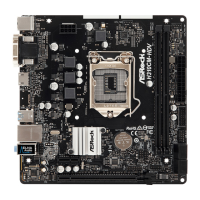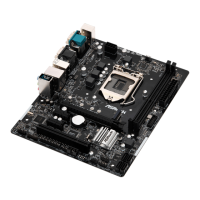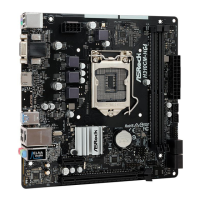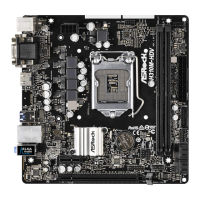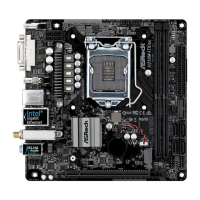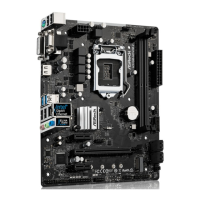Do you have a question about the ASROCK H310CM-HDV/M.2 and is the answer not in the manual?
Details the platform, CPU, chipset, memory, expansion, graphics, audio, LAN, storage, and other hardware specifications.
Step-by-step guide on how to safely install the Central Processing Unit into the motherboard socket.
Instructions for mounting the CPU cooler and heatsink assembly to manage processor thermal output.
Guide on inserting DDR4 DIMM modules into the motherboard slots for system memory.
Provides instructions for installing M.2 SSD modules into the dedicated slot on the motherboard.
Guide to ASRock's tuning utility for managing system performance, fans, and monitoring.
Describes the user-friendly dashboard interface for basic system status monitoring.
Introduces the comprehensive mode for detailed BIOS settings configuration.
Covers advanced overclocking settings for CPU, DRAM, and voltages for performance tuning.
Settings related to CPU features, threading, and power states for performance and efficiency.
Provides access to detailed configurations for CPU, Chipset, Storage, I/O, ACPI, USB, and Trusted Computing.
Configures boot order, boot modes (Fast Boot), and CSM settings for system startup.
| Non-ECC | Yes |
|---|---|
| Memory channels | Dual-channel |
| Memory slots type | DIMM |
| Number of memory slots | 2 |
| Supported memory types | DDR4-SDRAM |
| Maximum internal memory | 32 GB |
| Supported memory clock speeds | 2133, 2400, 2666 MHz |
| Processor socket | LGA 1151 (Socket H4) |
| Processor manufacturer | Intel |
| Compatible processor series | - |
| Certification | FCC, CE, ErP/EuP ready (ErP/EuP ready power supply is required) |
| Component for | PC |
| Motherboard chipset | Intel® H310 |
| Audio output channels | 7.1 channels |
| Motherboard form factor | micro ATX |
| Windows operating systems supported | Windows 10 x64 |
| Cables included | SATA |
| Bundled software | Software - ASRock A-Tuning - ASRock XFast LAN UEFI - ASRock EZ Mode - ASRock Full HD UEFI - ASRock My Favorites in UEFI - ASRock Instant Flash - ASRock Internet Flash |
| HDMI version | 1.4 |
| USB 2.0 ports quantity | 4 |
| Ethernet LAN (RJ-45) ports | 1 |
| USB 3.2 Gen 1 (3.1 Gen 1) Type-C ports quantity | 0 |
| LAN controller | Intel® I219-V |
| Ethernet interface type | Gigabit Ethernet |
| Graphics card | UHD Graphics |
| Maximum resolution | 4096 x 2160 pixels |
| Parallel processing technology support | Quad-GPU CrossFireX |
| BIOS type | UEFI AMI |
| ACPI version | 6.0 |
| BIOS memory size | 16 Mbit |
| System Management BIOS (SMBIOS) version | 2.7 |
| Harmonized System (HS) code | 84733020 |
| Depth | 188 mm |
|---|---|
| Width | 226 mm |

